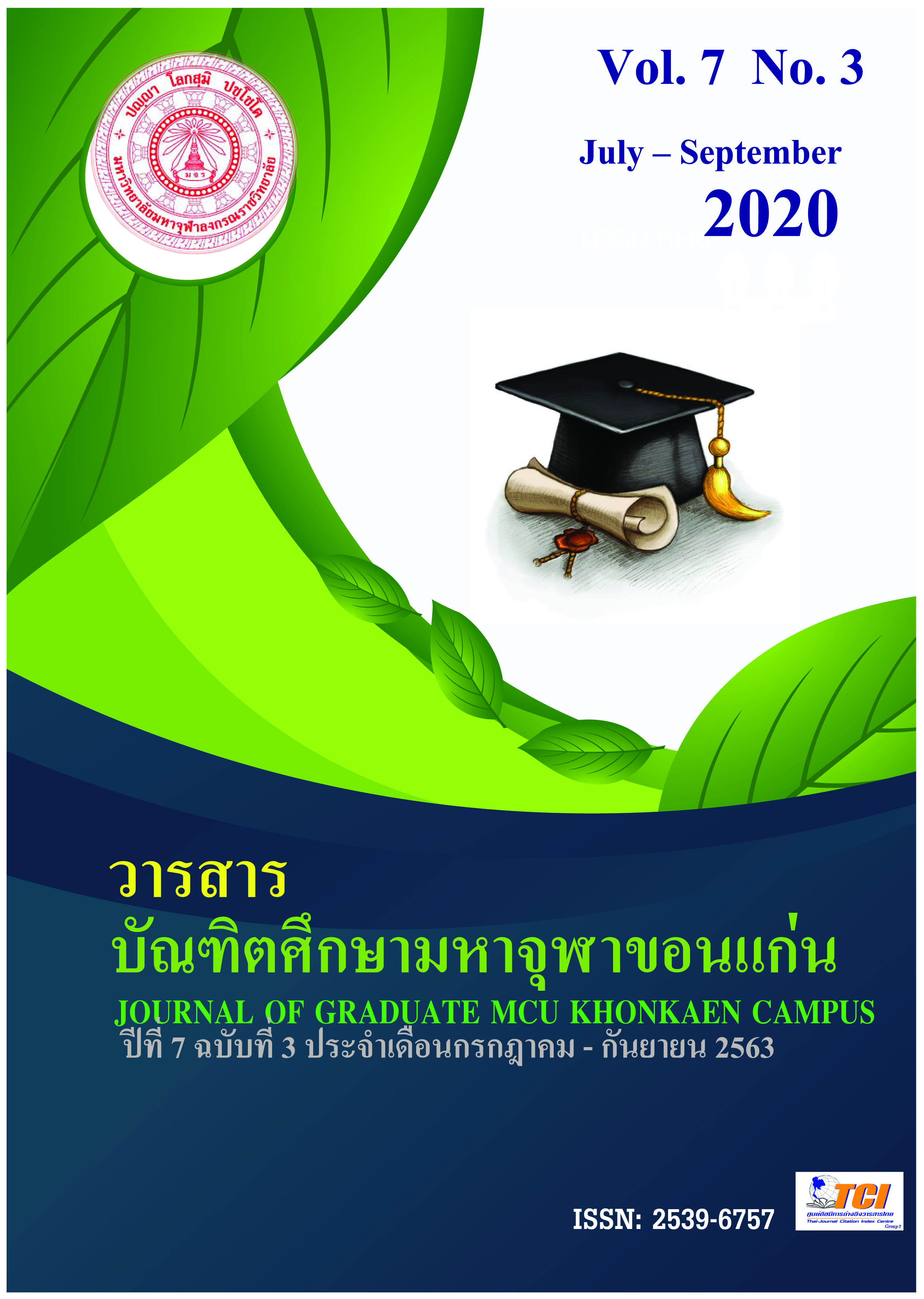AN ANALYTICAL STUDY OF BEAUTY OF TERRACOTTA VOTIVE AMULETS OF BUDDHA FROM NADOON STUPA IN ACCORDANCE WITH IDEALISM VIEWS
Main Article Content
Abstract
The objectives of this research were: 1) to study the history of the terracotta votive amulets of Buddha found in Nadoon Stupa (Phrathatnadoon); 2) to study the theories of beauty of idealism views; 3) to analyze the beauty of the terracotta votive amulets of Buddha in Nadoon Stupa as according to the viewpoint of idealism theories. This quality research was carried out through investing the Tipiṭaka, philosophical documents, Buddhism documents and related research. The obtained data were interpreted by the descriptive analysis.
The research results were as follows:
1) The terracotta votive Buddha amulets were excavated in the year 2522 (BCE), built in the Dvaravati period, about 1300 years old, to be a Buddhist worship object. They were correctly made in accordance with the Buddhist art principles. There were 6 colors: brown, light yellow, pink, red and white, divided into 6 styles: 1) rectangle; 2) square base and top-curve; 3) isosceles triangle; 4) triangular leave shape; 5) square type and 6) stand alone shape.
2) The idealism theory has a view that the mind (citta) is the only highest truth while matter is just a phenomenon of the mind. Also, the idealism theory divides aesthetics into 4 categories: 1) beauty, 2) distinction, 3) remarkableness and 4) faith.
3) The analysis of the beauty of terracotta votive Buddha amulets from Nadoon Stupa according to the theories of idealism suggests that the beauty that comes from the mind of the audience is the beauty that comes from the thoughts of the people who are satisfied with what they see. It is a state of prominence in which the presence of perceptions of various things in the minds of human beings towards objects and the beauty of the terracotta votive amulets of Nadoon Stupa is the result of creation by faith, beauty, remarkableness, distinction, and satisfaction according to the feelings of the individual.
Article Details
References
โรงพิมพ์คุรุ สภาลาดพร้าว, 2545.
ปานทิพย์ สุภนคร,และคณะ, ปรัชญาเบื้องต้น, (กรุงเทพมหานคร: มหาวิทยาลัยรามคำแหง, 2538.
พระไพรบูลย์ ปญฺญาโภ, “การศึกษาวิเคราะห์คุณค่าทางสุนทรียในศิลปะลายสักของนายบุญเลิศ อนุ
ศรี ตำบลบ้านกง อำเภอหนองเรือ จังหวัดขอนแก่น”, วิทยานิพนธ์พุทธศาสตร์
มหาบัณฑิต สาขาวิชาปรัชญา, (บัณฑิตวิทยาลัย: มหาวิทยาลัยมหาจุฬาลงกรณราช
วิทยาลัย, 2557.
สมชาติ มณีโชติ, ปติพิมพวิทยาพระศีอริยเมตไตรยจากพระพิมพ์นาดูน รัชมังคลาภิเษก,
(มหาสารคาม : อภิชาติการพิมพ์, 2531.
ประสาร บุญประคอง และคณะ, จารึกหลังพระพิมพ์ดินเผานาดูน, กรุงเทพฯ : กรมศิลปากร,
วารสารศิลปากร ปีที่ 25 เล่มที่ 1 มีนาคม 2524.
ลักษณวัต ปาละรัตน์, สุนทรียศาสตร์, (กรุงเทพมหานคร: สานักพิมพ์มหาวิทยาลัยรามคาแหง,
2551.
พ่วง มีนอก. สุนทรียศาสตร์. กรุงเทพมหานคร: โรงพิมพ์มหาวิทยาลัยรามคำแหง, 2530.
พระสุรศักดิ์ สุธีโร (มากมี), “การศึกษาวิเคราะห์ความงามของประติมากรรมในมหาเจดีย์ชัยมงคล”, วิทยานิพนธ์พุทธศาสตรมหาบัณฑิต สาขาวิชาปรัชญา, (บัณฑิตวิทยาลัย: มหาวิทยาลัยมหาจุฬาลงกรณ
ราชวิทยาลัย, 2547.

